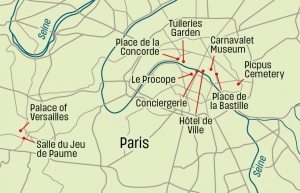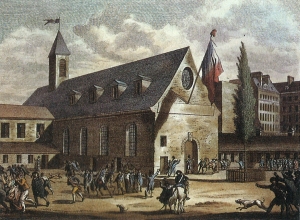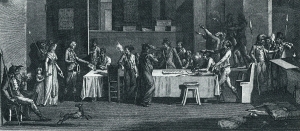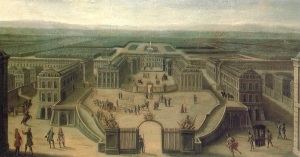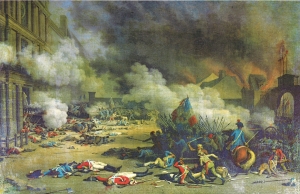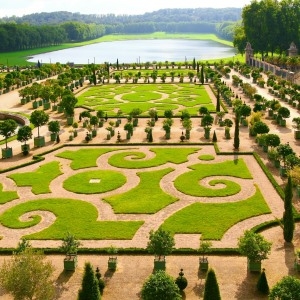
To be confirmed
Tour Introduction
This wonderful Revolutionary tour of Paris and Versailles is mostly enjoyed on foot and by metro. And whilst many of the locations will be familiar to you, many of the events and stories associated with them may not be. What took place at the Champ de Mars, Jardin des Tuileries and the Palais Royal to name but a few, may permanently change your understanding of Paris. We will visit magnificent buildings such as Notre Dame, the Pantheon and Versailles to reveal a sinister side to their history; discover cafes whose cellars housed revolutionary tribunals; dine where the many of the era’s luminaries and sans-culottes ate; explore some of Paris’s seemingly innocent narrow streets to reveal their dark past. Paris is a must see for any traveller, a centre of art, fashion, romance and gastronomy, there’s no better way to enjoy it than a long weekend exploring its most important historical period.
Paris traffic is notoriously slow so instead of using a coach on this tour we will use a mixture of travel by foot and metro to access sites as well as regional train services to get to Versailles.
Background
Little did the people of Paris realise what they were unleashing when they stormed the hated royal symbol of the Bastille on 14th July 1789. The result was the creation of a new political order with marked ideological discontinuity and a process of irreversible socio-economic change. During the next four years Parisians would witness regicide, the creation of a republic, a major European war, a reign of terror and civil war. The French Revolution showed that no monarchy or central power was safe against the masses and it reshaped political thinking and European history from that point on. Paris, not for the first time and certainly not for the last, was the centre of the world.
Highlights
- Tour by foot and by Metro around Paris
- In the company of an expert historian
- Familiar locations but with much to learn
- Full tour of Versailles and all it has to offer
What's Included
- 4 Star Hotel
- Return Eurostar Plus from London (optional)
- Buffet breakfast each morning
- Expert historians throughout providing a daily variety of talks, presentations and Q&A
- Dedicated Tour Manager
- Dinner parties hosted by your expert historians and tour manager
- The company of like-minded travelers
- Helpful and friendly travel advice
- Meals as indicated in the itinerary
- Two drinks i,e wine or beer at each dinner and a welcome drink on first evening
- Entrance fees for sites included in itinerary
- Tour information booklet
- Modern, comfortable, air-conditioned coach
"“Liberty, equality, fraternity, or death; - the last, much the easiest to bestow, O Guillotine!”"
― Charles Dickens , A Tale of Two Cities (1859)
Itinerary
Day 1: Welcome to Revolutionary Paris!
Our hotel sits a few hundred yards south of the site of the Bastille, in the heart of the Faubourg Saint-Antoine, home in the eighteenth century to a class of fiercely independent craftsmen and artisans, who were to become stalwarts of revolutionary activism. As we walk through the streets of eastern Paris, we will be able to see remnants of pre-revolutionary life scattered around the landscape. The first stage of our pilgrimage takes us to the only surviving remnant of the Bastille's medieval fortifications, before we stroll to the Musée Carnavalet to enjoy its recently-revitalised displays covering the whole sweep of Parisian history. Before our dinner, we will explore the Marais, where winding narrow streets preserve the atmosphere of the pre-modern city. (D)
Day 2: Pomp and Power at Versailles
Today we experience the splendours of the French absolute monarchy and ponder how it was able to be brought low by the common people. Approaching the palace of Versailles through its surrounding town, we will see how it dominates the landscape around it, an entirely conscious articulation of the supremacy of monarchical power, under God. Within the palace, we can observe the spaces within which the display of everyday power was choreographed, against a background of brutally direct monarchical propaganda, as well as seeing how later regimes sought to turn the prestige of this remarkable site into a monument to specifically national glory. Touring the town in the afternoon, we will intersperse the opportunity to look at some treasures of the Old Regime more closely, with visits to the actual sites of revolutionary upheaval, retelling the story of how 'all this' was brought to its knees. (B, D)
Day 3: Clubs, Crowds and Carnage
Our journey today takes us to many of the most turbulent sites of politics in the revolutionary years. From the heart of the city, we will explore how its dense. medieval streets and buzzing neighbourhoods were called to participate in change, how a culture of both democratic participation and paranoid alarmism developed, and how an age that scorned and feared 'faction' nevertheless developed an intensely partisan political culture, in which everyone was a patriot, and busily denounced everyone else for not being one. As well as visiting some of the key sites where this culture was experienced as a roaring, babbling everyday reality, we will also tour the Conciergerie prison, where a vast swathe of people, from royalty to humble workers, experienced the dreadful consequences of escalating conflict, and the descent to Terror. (B, D)
Day 4: Commemorations
On our final day, we contemplate how the revolutionaries wanted their epic to be remembered, and some of the very different ways in which it has been. Crossing once again to the Left Bank, we will ascend to the great domed mausoleum of the Panthéon, and its emblazoned message of national gratitude to 'great men'. Inside, as well as exploring the final resting-place of an array of revolutionaries and heroes, we also confront the dramatic ways in which this space itself has been reimagined repeatedly in the centuries since 1789, in the service of very different political traditions. In the afternoon, we will further contemplate the Revolution as an experience to be mourned, in the intimate space of the Picpus cemetery. Here, by a twist of fate, many of the Terror's victims lie beside one of the Revolution's greatest heroes, the Marquis de Lafayette, reflection on whose complex political heritage will bring our exploration to a close. (B)

